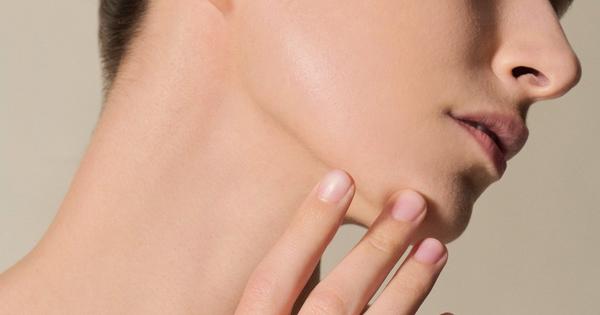Skin Regimen Lx Vitamin C Serum
Brightening serum
skin care
Eve Mérinville | Corporate RD Excellence & SC RD and Innovation Director
8 min read

If you spend any bit of time researching skincare, you’re sure to read a lot about salicylic acid and vitamin C. That’s because both are essential for a well-rounded skincare regimen.
Salicylic acid is an exfoliant that works to hydrate oily skin and cleanse the pores, while vitamin C is used to brighten the skin and help diminish the appearance of aging.
It can be taxing to figure out which products’ ingredients can be safely used together…and which ones should be avoided. Allow us to put this confusion to rest. Salicylic acid and vitamin C can be used together. In fact, they actually can enhance each other when combined the right way. You can even add in additional acids such as hyaluronic acid.
Continue reading for a breakdown of both salicylic acid and vitamin C, their benefits, and how to properly add the two to your regular skincare routine. Once you understand how to best combine your skin care products, we’re certain you'll be amazed by the results.
"As we move into winter weather, and especially if your skin is sensitive and/or dry, start with just a few times a week, using Vitamin C in the morning and Salicylic Acid in the evening, for best results with minimal irritation."
Elisabeth Nehme - Global Brand Ambassador Comfort Zone
Salicylic acid has been used for over 2,000 years to treat various skin conditions. This acid is a member of the beta-hydroxy acid group, often referred to as BHAs. This is just a fancy science word that means it contains a chemical exfoliant that works to remove dead skin cells.
These specific BHAs can be found naturally in willow bark. Plus, it is the only BHA used in skincare products. It works as a peeling agent and has anti-inflammatory properties that can aid those with acne-prone skin.
When it comes to using salicylic acid, long-term consistency is key. However, it should also be used sparingly—only a few times a week to be exact. It can take around six to eight weeks for results to become noticeable.
Salicylic acid can be used on normal, oily, or a combination of both skin types. You can find salicylic acid with low concentrations in moisturizers, acne patches, chemical peels, serums, gels, masks, and toners.
Salicylic acid is a super effective exfoliant. This acid works its way deep into the skin to dissolve the buildup of dead skin cells while unclogging pores for clearer, healthier skin. This is good news for anyone with oily or blemish-prone skin.
Apart from helping maintain your skin’s natural oil, salicylic acid diminishes the appearance of acne breakouts as well. Plus, it also helps to prevent future breakouts, including both whiteheads and blackheads.
While salicylic acid is relatively gentle, it should be used as a treatment with caution. Before regularly using your product, first, do a patch test to make sure it causes no irritation or inflammation. Since it is an exfoliant that will purge dead skin cells, it is recommended to start slowly. Redness, itchiness, or irritation could be a sign that you are using it too frequently or possibly need a lower concentration.
Most people associate vitamin C with their morning glass of orange juice, daily supplements, or other fruits and veggies that they eat regularly. While these things can and do nourish our bodies with vitamin C, the benefits don’t always make their way to our skin.
The best way to ensure vitamin C is positively affecting your skin is to apply it topically. Vitamin C is an l-ascorbic acid that has antioxidant benefits for the skin when applied with a vitamin C serum, cream, or toner.
Vitamin C neutralizes molecules known as free radicals, which can damage cells in the body. Free radicals are unstable and can cause many different concerns, including fine lines and other signs of aging. The superpower of vitamin C is that it can slow down the appearance of aging and prevent free radicals from doing their damage.
Vitamin C is widely known for boosting the immune system, but as a skincare ingredient, it helps to significantly reduce the appearance of fine lines, wrinkles, and dark spots. The antioxidants in vitamin C help eliminate dry skin by retaining moisture. This gives it a more plump and firm appearance. Vitamin C can also give you the look of brighter, more radiant skin.
Vitamin C has a high safety profile. However, it may cause irritation on sensitive skin. If you happen to notice redness, itchiness, or inflamed skin after use, you should see a dermatologist to decide how best to integrate vitamin C into your unique skincare routine.
While salicylic acid and vitamin C can enhance each other, they can also negate one another if used incorrectly. It is important to combine them the right way in order to get the best results.
Vitamin C contains pH. What is pH? Let's break that down. All pH really refers to is the level of acidity in a product, on a scale from zero to 14. As a rule of thumb, the lower the pH, the gentler the solution is on your skin.
Vitamin C usually has a pH of 3 or lower. If you are not cautious, mixing vitamin C with salicylic acid can reduce the effectiveness of vitamin C. Mixing the two together may also cause irritation for sensitive skin. To avoid this, it is best to use the two at opposite ends of your skincare routine.
To safely use salicylic acid and vitamin C together safely, it is important to combine them properly.
To ensure you are experiencing the benefits that salicylic acid and vitamin C offer, there are a few methods to begin incorporating them into your regimen.
For instance, Vitamin C absorbs quickly into the skin, so it is best to use it toward the end of your skincare routine. Salicylic acid should be used in the beginning since it increases the natural acidity of the skin.

If you are just starting out with salicylic acid and vitamin C, it may be best to start by alternating between the two on different days. This will give your skin time to adjust to the two active ingredients. You could apply a vitamin C toner one day and a salicylic acid the next.
Both salicylic acid and vitamin C are acidic. One of the simplest ways to incorporate both of these products into your skincare routine is to use them at different times. This way they don’t layer on top of each other and are less likely to cause irritation.
You may use a salicylic acid cleanser at night so as not to expose your skin to UV light or harsh climates. Then use a vitamin C serum in the morning since it is packed with healthy antioxidants. As long as you are protecting your face with sunscreen, acids can be used at any time of day.
While it is often stated that using salicylic acid and vitamin C separately are more effective, there are ways you can combine them. As we’ve discussed, it all comes back to pH.
Vitamin C absorbs quite easily into the skin, especially skin with lower pH levels. Salicylic acid lowers the pH of the skin, allowing vitamin C to be absorbed more quickly and therefore be extremely beneficial. This is great for anyone who has been using both of these products and has not experienced an allergic reaction or irritation.
They say two is better than one, and in this case, we agree. Salicylic acid and vitamin C are both great on their own, but even more beneficial together.
Whether you are hoping to brighten your skin, prevent acne breakouts, or slow down the signs of aging, this might be just the combination you are looking for. Start slowly by incorporating a vitamin C serum into your routine and then add a salicylic acid. Remember, good things take time and consistency is key.

Brightening serum
Anti-wrinkle serum
Exfoliating foaming powder
Exfoliating lotion
Delicate enzymatic mask